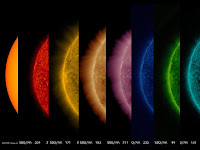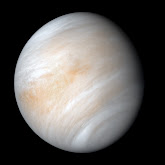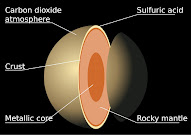Our Solar System is one of over 500 known solar systems in the entire Milky Way galaxy. The solar system came into being about 4.5 billion years ago, when a cloud of interstellar gas and dust collapsed, resulting in a solar nebula, a swirling disc of material that collided to form the solar system. The solar system is located in the Milky Way's Orion star cluster. Only 15% of stars in the galaxy host planetary systems, and one of those stars is our own Sun.

Sun: The Sun is the star at the center of the Solar System. Age is 4.5 Billion Years, It is a nearly perfect sphere of hot plasma,heated to incandescence by nuclear fusion reactions in its core, radiating the energy mainly as visible light and infrared radiation. It is by far the most important source of energy for life on Earth. Its diameter is about 1.39 million kilometres (864,000 miles), or 109 times that of Earth. Its mass is about 330,000 times that of Earth, and accounts for about 99.86% of the total mass of the Solar System.[20] Roughly three quarters of the Sun's mass consists of hydrogen (~73%); the rest is mostly helium (~25%), with much smaller quantities of heavier elements, including oxygen, carbon, neon, and iron.The Sun is travelling at 220 km per second.
1) BIGGEST: If the Sun were as tall as a typical front door, Earth would be about the size of a nickel.
2) MOST MASSIVE: The Sun is the center of our solar system and makes up 99.8 percent of the mass of the entire solar system.
3) DIFFERENT SPINS: At the equator, the Sun spins once about every 25 days, but at its poles the Sun rotates once on its axis every 35 Earth days.
4) CAN’T STAND ON IT: As a star, the Sun is a ball of gas (92.1 percent hydrogen and 7.8 percent helium) held together by its own gravity.
6) NUCLEAR FUSION: The Sun's core is about 27 million degrees Fahrenheit (15 million degrees Celsius).
7) MOONLESS: But orbited by eight planets, at least five dwarf planets, tens of thousands of asteroids, and up to three trillion comets and icy bodies.
8) WHAT WE SEE: The Sun’s visible surface sometimes has dark sunspots, which are areas of intense magnetic activity that can lead to solar explosions.

Sun Rotation Speed: The sun revolves around the center of the Milky Way Galaxy with a speed of 1.997 km/s. On the other hand, rotate means to spin on an axis. The Earth rotates every 24 hours. The sun rotates, but not at a single rate across its surface,The sun itself also rotates in a counterclockwise direction. The satellites of the planets also generally revolve and rotate in a counterclockwise direction.
(Our sun is located about two-thirds of the way out from the center of the Milky Way. (Illustration via Caltech)
How will the Sun die?
After fusing helium in its core to carbon, the Sun will begin to collapse again, evolving into a compact white dwarf star after ejecting its outer atmosphere as a Planetary Nebula. The predicted final mass is 54.1% of the present value, most likely consisting primarily of carbon and oxygen.
While the sun may have 5 billion years left before it runs out of fuel, life on Earth will likely be wiped out long before that happens.
Revolving Around the Sun are Eight Planets : In the first Phase of the blog we will discuss Terrestrial planets: The planets Mercury, Venus, Earth, and Mars, are called terrestrial because they have a compact, rocky surface like Earth's terra firma. The terrestrial planets are the four innermost planets in the solar system.The other fours will be discussed in the 2nd phase of the blog, "The Jovian Planets".
The planets are divided into two categories, based on their composition, Terrestrial and Jovian. Terrestrial Planets including Mercury, Venus, Earth,and Mars, are primarily made of rocky material. Their surfaces are solid, they don't have ring systems, they have very few or no moons, and they are relatively small. The smallest and closest to the sun is Mercury.
Whereas , The Jovian planets are Jupiter, Saturn, Uranus, and Neptune. They orbit far from the sun. These planets have no solid surfaces and are essentially large balls of gas composed primarily of hydrogen and helium. They are much larger than the terrestrial planets.
Which has the shortest orbit in the solar system at about three Earth months. No evidence for life has been found on Mercury. Daytime Temperatures can reach 430 degrees Celsius (800 degrees Fahrenheit) and drop to -180 degrees Celsius (-290 degrees Fahrenheit) at night. It is unlikely life (as we know it) could survive on this planet. The inhalation of mercury vapour can produce harmful effects on the nervous, digestive and immune systems, lungs and kidneys, and may be fatal. The inorganic salts of mercury are corrosive to the skin, eyes and gastrointestinal tract, and may induce kidney toxicity if ingested.
Inside Mercury:
Mercury Mercury is the second densest planet, after Earth. It has a large metallic core with a radius of about 1,289 miles (2,074 kilometers), about 85 percent of the planet's radius. There is evidence that it is partly molten, or liquid. Mercury's outer shell, comparable to Earth's outer shell (called the mantle and crust), is only about 400 kilometers (250 miles) thick.
Orbit and Rotation:
 It speeds around the Sun every 88 days, traveling through space at nearly 29 miles (47 kilometers) per second, which is at an average speed of 105,947 miles (170,505 kilometers) per hour. faster than any other planet. Mercury spins slowly on its axis and completes one rotation every 59 Earth days. Mercury is 66.695 million km away from the Sun and 179.99 million km from Earth.
It speeds around the Sun every 88 days, traveling through space at nearly 29 miles (47 kilometers) per second, which is at an average speed of 105,947 miles (170,505 kilometers) per hour. faster than any other planet. Mercury spins slowly on its axis and completes one rotation every 59 Earth days. Mercury is 66.695 million km away from the Sun and 179.99 million km from Earth.Planet Venus: is the hottest planet, with temperatures of up to 867 degrees Fahrenheit, due to an atmosphere of carbon dioxide and extensive lava flows. Nothing could live on what passes for land on Venus; its smooth volcanic plains are a scorching hellscape hot enough to melt lead, where the temperatures exceed 800 degrees Fahrenheit. High in the clouds, however, the pressures and temperatures and acidity levels would be less intense — though still vile. The distance from the Sun is 108.64 million km, and from the Earth is 257.78 million km.
Inside Venus : Venus has a rocky crust, a thick basaltic rock mantle and a nickel-iron core.There is no surface water.The surface of Venus has been mapped through its cloud layer using radar.
The surface of Venus is covered with roughly 20 percent lowland plains of solidified lava, 70 percent rolling uplands, and 10 percent highlands (volcanos, craters, mountains). The two major plains are called Aphrodite Terra Highlands (about half the size of Africa) and Ishtar Terra (a lava-filled basin which is bigger than the United States). At the surface, there are relatively slow winds. Venus does not have a very strong magnetic field; this may be because of the planet's slow rotation or perhaps Venus' core lacks a molten outer layer.
Orbit and Rotation: It takes about 243 Earth days to spin around just once. Because it's so close to the sun, a year goes by fast. It takes 225 Earth days for Venus to go all the way around the sun with a speed of 35.02 km/s.
Next to this world of fire is a world of water.
Planet Earth: The water systems on this planet help create the only known environment in the universe capable of sustaining life. The last of the terrestrial planets. Earth, our home, is the third planet from the sun. It's the only planet known to have an atmosphere containing free oxygen, oceans of water on its surface and, of course, life. Earth is the fifth largest of the planets in the solar system. It's smaller than the four gas giants — Jupiter, Saturn, Uranus and Neptune — but larger than the three other rocky planets, Mercury, Mars and Venus.
Earth happens to lie within the so-called "Goldilocks zone" around the sun, where temperatures are just right to maintain liquid water on our planet's surface.
Earth has a diameter of roughly 8,000 miles (13,000 kilometers) and is round because gravity pulls matter into a ball. But, it's not perfectly round. Earth is really an "Oblate Spheroid," because its spin causes it to be squashed at its poles and swollen at the equator.
Inside Earth:
Earth's core is about 4,400 miles (7,100 km) wide, slightly larger than half the Earth's diameter and about the same size as Mars' diameter. The outermost 1,400 miles (2,250 km) of the core are liquid, while the inner core is solid; it's about four-fifths as big as Earth's moon, at some 1,600 miles (2,600 km) in diameter. The core is responsible for the planet's magnetic field, which helps to deflect harmful charged Particles Shot from the sun.
Above the core is Earth's mantle, which is about 1,800 miles (2,900 km) thick. The mantle is not completely stiff but can flow slowly. Earth's crust floats on the mantle much as a piece of wood floats on water. The slow motion of rock in the mantle shuffles continents around and causes earthquakes, volcanoes and the formation of mountain ranges.
Orbit and Rotation:
The earth rotates once every 23 hours, 56 minutes and 4.09053 seconds, called the sidereal period, and its circumference is roughly 40,075 kilometers. Thus, the surface of the earth at the equator moves at a speed of 460 meters per second--or roughly 1,000 miles per hour.
The earth is moving about our sun in a very nearly circular orbit. It covers this route at a speed of nearly 30 kilometers per second, or 67,000 miles per hour. In addition, our solar system--Earth and all--whirls around the center of our galaxy at some 220 kilometers per second, or 490,000 miles per hour. As we consider increasingly large size scales, the speeds involved become absolutely huge!
Planet Mars: Might have also supported life about 3.7 billion years ago, when the planet had a watery surface, and moist atmosphere. Mars is the fourth planet from the Sun and the second-smallest planet in the Solar System, being larger than only Mercury. In English, Mars carries the name of the Roman god of war and is often referred to as the "Red Planet". its Gravity: 3.711 m/s² , Distance from Sun: 227.9 million km and
Radius: 3,389.5 km. Beyond the four Terrestrial planets of the inner solar system lie the Jovian planets of the outer solar system. Mars has only a thin atmosphere, with a surface pressure less than a hundredth of the Earth's. Even worse, it is 96% carbon dioxide with only about 0.1% oxygen, An astronaut on Mars would not be able to breathe the Martian air and would need a spacesuit with oxygen to work outdoors.
Inside Mars: Its surface is covered with deep canyons and huge, inactive volcanoes. The soil on Mars contains a substance called iron oxide, which gives the planet a red color. Like Earth, Mars also has a core, mantle, and crust. Mars is lighter for its size than the other rocky planets.The planet’s crust might be made of three layers. This is the first time scientists have directly probed the inside of a planet other than Earth, and will help researchers to unravel how Mars formed and evolved over time. Before this mission, researchers had measured only the interior structures of Earth and the Moon. “This information was missing, until now, from Mars,”
Orbit and Rotation:
Mars has an orbit with a semimajor axis of (228 million km), and an eccentricity of 0.0934. The planet orbits the Sun in 687 days and travels making the average orbital speed 24 km/s, around the Sun. (53,853 miles per hour), or a period of about 686.93 days.
till now i have discussed about four planets in detail , the next four (Jovian planets) will be explore like above in the 2nd phase of the blog. i hope that you will enjoy by readiing it , your precious comments will be higly appericiated.
to be continued .......................
Regards
Tahir Ahmad Dawood






















